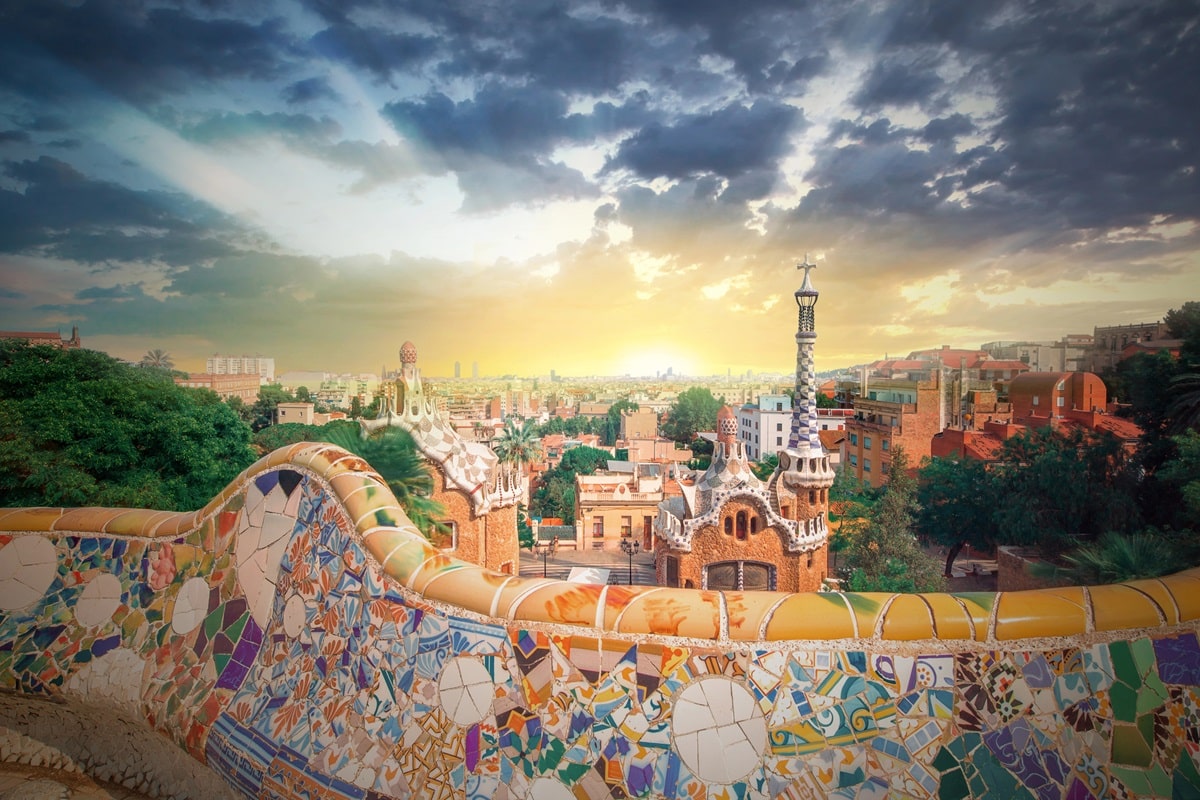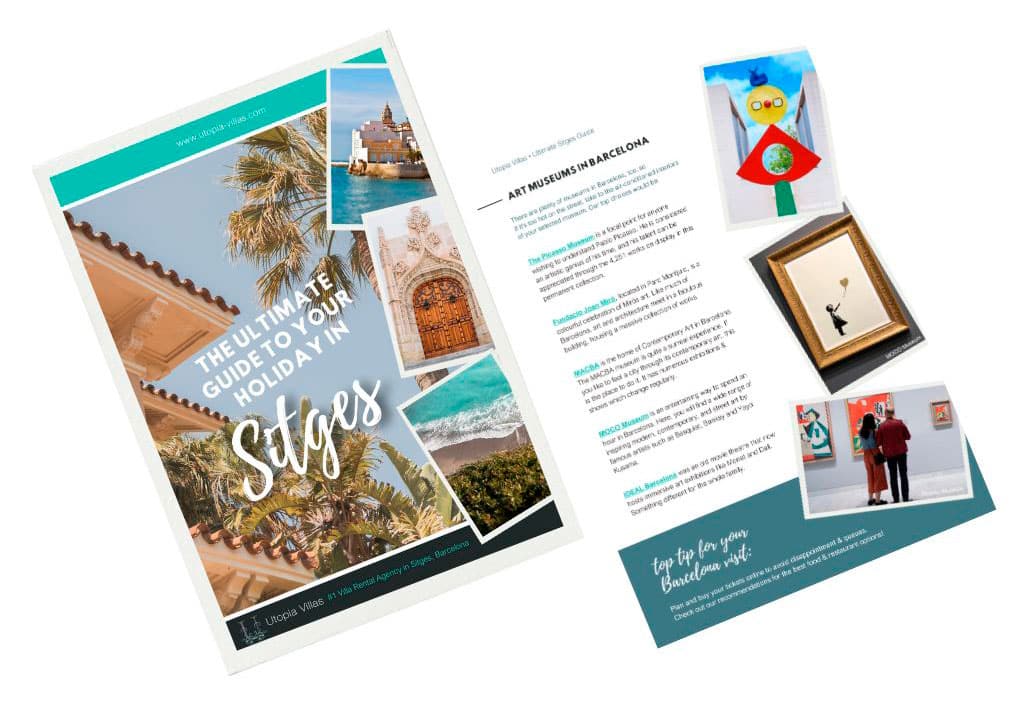Of course, there are plenty of bars, restaurants and beaches to keep you busy during your stay here but don’t forget that Barcelona and Sitges are awash with culture. Indulge your intellectual curiosity and take advantage of some more obscure but no less delightful Barcelona historical sites (and some in Sitges too!)
Historic Sites in Barcelona
Barcelona is undoubtedly one of the most famous cities in the world. While I do recommend that you visit as many of the well-known historic places as you can, I want to offer up some hidden gems that are definitely worth a visit.
Forbidden Walking Tour
If you are looking for stories of Barcelona´s dark side, then look no further. On this two hour tour you will hear about terrifying torture, saucy scandal and monstrous murder. You will learn about a child-snatching vampire, the biggest brothel in Europe, the murder of schoolboys and the erotic shows still held today.
Parque del Laberinto de Horta
Located in the North part of the city, this historic gem, dating back 200 years is well worth a visit. The Labyrinth is in a beautiful park, where you will discover statues, gardens, ponds, historic building, and of course, a maze!
It was commissioned by Marquis Joan D’Antoni Desvalls Ardena and the work was executed by Italian architect, Domenico Bagutti. If you have seen the film, Perfume, you may recognise the labyrinth from one of the scenes. (If you haven’t seen Perfume, you should!)
Refugio antiaéreo 307, Air-raid shelter
One of the 1300 shelters built in the Spanish Civil war to protect civilians from Nationalist bombing. You can visit the 400 metres of tunnel and see what the living conditions were like. There are various rooms such as toilets, a sick bay and a drinking fountain. A dark period of history and a suitably sombre and atmospheric site.
Casa de les Punxes
A modernista building designed by the master architect Josep Puig i Cadafalch. You will also discover the Legend of Sant Jordi if you take a tour. A true architectural gem, be sure to take in the ´secret´rooftop terrace. Enjoy a drink with delightful panoramic Barcelona views.
Arús Public Library
The Biblioteca masónica Arús, was founded in 1895 by Rossend Arús. Its motto is, ´_the more illustrated the people are, the further they get from absolutism_.´ In atmospheric old world surrounding are 80.000 volumes on the history of freemasonry, the labour movement, federal republicanism, anarchism, and the Sherlock Holmes universe.. Not one to miss if you are a bookworm.
Museum of Carrozas Fúnebres
If you are planning a visit to Montjuic Cemetery, why not stop off at the unique hearse museum. This museum is devoted to the funerary customs of Barcelona. Death was much more a part of life in the 19th century than now and the museums vehicles and 2000 volume library are testament to this sobering thought.
Temple of Augustus
Tucked in a corner off Carrer Paradís in the Gothic Quarter, this remarkable survivor from Barcelona’s Roman past stands hidden behind a ‘modern’ medieval building. Just 4 columns of the temple remain but they stand 9 metres tall…
Barcelona is home to many Roman fragments. There are substantial sections of the Roman city wall all around the old town, patricularly alongside and in front of Barcelona’s cathedral at Pl. de la Seu.
Archeological finds from the Roman period survive at the Museu d’Història de Barcelona – Plaça del Rei and an even more special archeological site hides in the cellar – a suspended walkway will take you on an artfully lit tour of Roman foundations still in situ beneath the medieval building,
El Born Market
More atmospheric foundations lie underneath this 19th century market building. In 1714, Barcelona found itself on the losing side in the Spanish War of Succession and the victors cleared a huge swath of Barcelona to build a castle from which to oppress the populace. Times changed, the castle was cleared and a residentail district grew up in its place. In the 1970’s the market building was deemed decrepit and scheduled for redevelopment but on further investigation it was discovered that a great part of medieval Barcelona was preserved beneath its floor. The site was excavated, the old foundations and market building preserved and the result is a fascinating look into the past.
Museu Frederic Marès
And there’s just enough time for one more museum. The personal collection of sculptor Frederic Marès stands just by the cathedral at Plaça de Sant Iu and houses besides a perhaps expected fantastic collection of sculpture, a veritable treasure trove of 19th century household items. Profusion is the name of the game here – why have one example of a fan or a hat or a dolls house when you can have fifty or a hundred. The collection, housed in a medieval palace is packed to the rafters and is a feast for the eyes.
Gothic Quarter, El Born, El Raval….
The various districts within the old town of Barcelona are a sight and a site all by themselves – just wandering around aimlessly will soon find you in atmospheric and ancient streets, squares, courtyards and alleyways. One doesn’t necessarily need to know what one is looking at to enjoy it!
Historical Sites in Sitges
The Cau Ferrat Museum
Founded in 1893 by the artist Santiago Rusiñol (1861-1931) as a home and workshop, Cau Ferrat became a public museum in 1933. The museum exhibits iron, ceramic and glass pieces and also includes artwork by other famous artists such as Ramon Casas and Pablo Picasso!
Museu de Maricel
The Museu de Maricel contains a wide ranging selection of artifacts dating all the way from the 10th century right up to the start of the 20th. Originally the collection of one Dr. Jesús Pérez Rosales, the collection has been expanded by the Sitges Heritage Association and is a treasure trove of Catalan art. Perched on a clifftop at the heart of the old town, the picturesque setting alone merits a visit.
Museu Romantic
A beautiful neoclassical mansion, this was the home of the wealthy Llopis family – upstanding wine merchants and lawyers – until it was gifted to the Province of Barcelona by Manuel Llopis de Casades in the 1930’s. The Museu often hosts recitals so keep an eye out if you’d like a cultural diversion during your stay. Otherwise, be sure to visit the Museu anyway for a taste of graceful living in 19th century Sitges.
Art Galleries in Sitges
Sitges has long been a Bohemian town, full of workshops and galleries displaying and selling art. As we’ve seen, many of those art galleries are beautiful historical sites in themselves. Sitges is so blessed with galleries in fact, we have a dedicated Sitges Art and Culture article. You can find it here.
Walking Historical Sitges
Historical Sitges is fairly compact so you can see it all in just a few hours. Take a stroll, stop where you like and linger as long as you wish.
Any tour of historical Sitges must start at Sant Bartomeu i Santa Tecla, the Parish Church of Sitges. Built in the 17th century with many successive alterations and standing on a rocky outcrop overlooking the Fragata beach, this Baroque buildings asymmetrical silhouette is the emblem of Sitges.
Nearby is the crenelated town hall, built in 1887-1889 on the site of the Medieval Castle. The Hospital de Sant Joan de Sitges in Poble Sec, a little way out from the old town dates back to 1324. Bernat de Fonollar, feudal lord of Sitges, founded the hospital but the building that stands here today was designed in wonderful modernista style by Josep Font i Gumà and was opened in 1912.
Keep your eyes peeled for many more art nouveau style modernista buildings and gardens in the streets near the train station. Contrast these with the fishermans cottages in the small lanes by the shore and you have the history of Sitges in a nutshell – the fishing village that became an artistic getaway for Barcelona’s smart set.
Walk yourself round the old quarter of Sitges and discover its history for yourself or check out a guided walk like this one from Visit Sitges.
If art and culture is your thing then follow our Sitges Art and Culture Tour.





